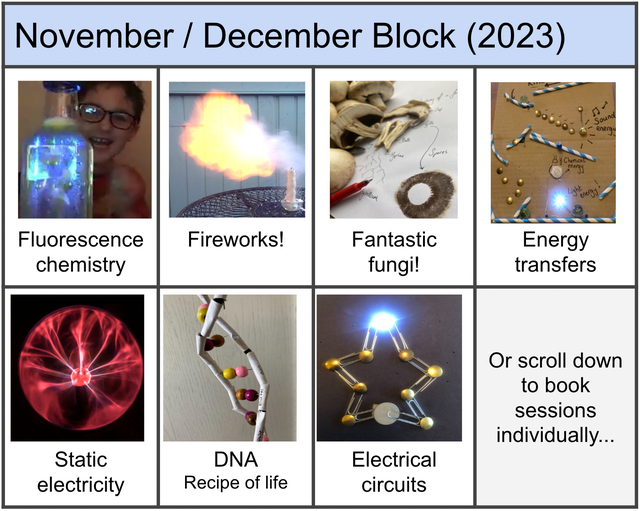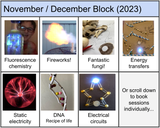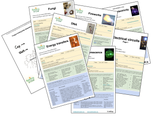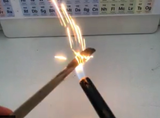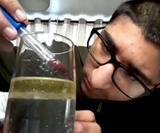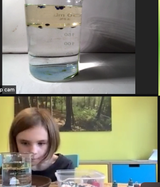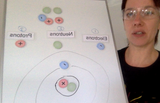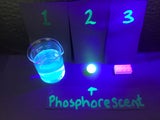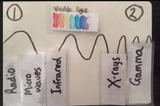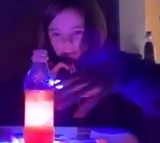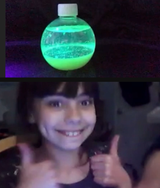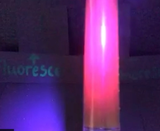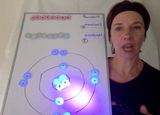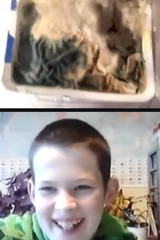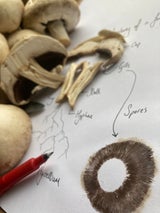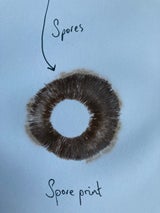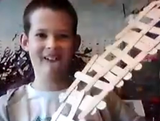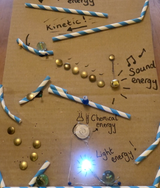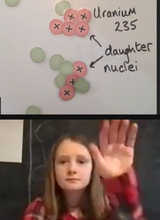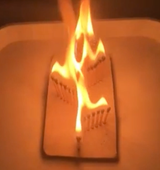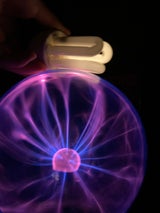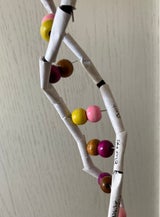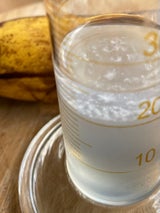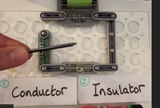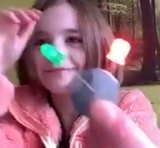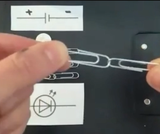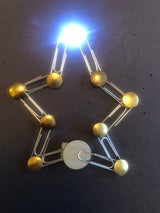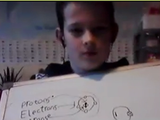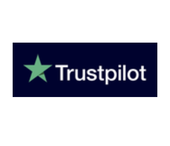- Online STEM
- >
- Online STEM: Nov / Dec for 11-16s (seven sessions)
Online STEM: Nov / Dec for 11-16s (seven sessions)
Tuesdays from 2.10 to 3pm:
Fluorescence Now on Thursday 2nd November
Firework Chemistry (7th November)
Fantastic fungi! (14th November)
Energy transfers (21st November)
Static electricity (28th November)
DNA: The recipe of life! (5th December)
Electrical circuits (12th December)
Your home-education journal is already written!
Your booking confirmation will include a digital download containing joining instructions and link, equipment list and a summary of the keywords, key concepts and student activities planned for this session. You can simply copy, paste and adapt it for your home-education journal and use it to help you discuss the learning with your child afterwards.
------------------------------------------------------------
Fluorescence
Make a fluorescent lava lamp!
(Whilst learning about fluorescence chemistry)!
+ Make a fluorescent lava lamp!
+ Learn why some things glow in the dark
+ Watch amazing demonstrations!
+ Learn about the electromagnetic spectrum, atomic structure and the excitation of electrons
Equipment (To join an entirely optional practical)
It is a good idea to have a whiteboard or paper, pen, ruler and calculator to hand in each session.
- "Blacklight" / UV torch (hazard: do not shine in eyes, you may want some sunglasses to hand)
- Table cloth / mat / tray
- Highlighter pen, any colour (one you don't mind being destroyed but that still has plenty of ink in it)
- paper (black is best but any will do)
- Small transparent, colourless bottle (300mL max. The smaller the better, glass or plastic) smooth sided if possible, with leakproof lid
- Vit C tablets / "Alka seltzer" / other effervescent tablet (supervise medicines if necessary)
- Baby oil (ideally) / vegetable oil or similar will also work (approx. 200mL)
- cup of water
- ability to darken the room if possible!
- Towel or cloth
- Pipette or syringe (medicine syringes are fine)
- Pliers (supervision recommended), scissors may do
Links suggest sources of appropriate resources
------------------------------------------------------
Firework Chemistry
Discover the chemistry of fireworks!
+ Watch exciting demonstrations to see how fireworks work!
+ Make a (safe!) "firework" display of your own
+ Learn about chemical reactions and symbols, flame tests and the periodic table.
Equipment (To join an entirely optional practical)
It is a good idea to have a whiteboard or paper, pen, ruler and calculator to hand in each session.
- A tall glass or beaker half filled with water
- A separate glass ½ filled with vegetable / sunflower oil or similar
- Liquid food colouring (water soluble) (two colours or more ideally)
- Pipette or teaspoon
- Cloths in case of spills
- A tray or plate to work on may be a good idea
Links suggest sources of appropriate resources
------------------------------------------------------
Fantastic fungi!
Explore the fantastic world of fungi big and small!
+ Make a beautiful spore print
+ Create a labelled mushroom dissection record and learn about its anatomy, structure and function
+ See what fungus looks like under the microscope!
+ Learn about the role of decomposers in the ecosystem and how fungi feed!
Equipment (To join an entirely optional practical)
It is a good idea to have a whiteboard or paper, pen, ruler and calculator to hand in each session.
- Three or more fresh mushrooms (edible ones from a shop). Please do not use foraged mushrooms as it can be very hard to be certain of their safety.
- A sharp knife is useful (supervision recommended) but not essential
- A plate or chopping board
- A4 white card or paper
- White card or paper (min. 10cm x 10cm)
- Black card or paper (min. 10cm x 10cm)
- Fine hairspray (optional) or artists fixing spray (not needed until the day after the session)
- A fine / sharp pen or pencil
- A small bowl or tub with a diameter larger than your mushroom, transparent if possible. A large yoghurt or soup pot is ideal.
- A ruler may be helpful.
- You may wish to print the template provided.
------------------------------------------------------
Energy transfers
Watch and make some crazy chain reactions!
+ Watch some fiery, exciting and satisfying chain reactions!
+ Make a chain reaction marble run and learn about energy within!
+ Learn about energy transfers, nuclear fission and Sankey diagrams.
Equipment (To join an entirely optional practical)
It is a good idea to have a whiteboard or paper, pen, ruler and calculator to hand in each session.
- Jumbo lolly sticks (as many as possible, at least 10)
- Table top / floor space
- A4 size thick, corrugated card (e.g. side of a cardboard box)
- Paper straws (min. 5)
- At least 2 standard sized marbles (choking hazard, keep away from young children)
- Glue stick or similar quick drying glue for paper / card
- Two sharp pencils
- ‘Blue tak’ or similar
- Felt tip or fine marker pen
- A range of small items such as paper clips, small bells, drawing pins, anything similar you have to hand (take care with sharp pins)
------------------------------------------------------
Static electricity
Is it magic? No it’s static!
+ See things fly, light up and stick without glue!
+ Watch amazing demonstrations!
+ Learn about charge imbalance, conductors and insulators, atomic structure, electron transfer and static discharge.
Equipment (To join an entirely optional practical)
It is a good idea to have a whiteboard or paper, pen, ruler and calculator to hand in each session.
- Plastic ruler / comb or range of similar plastic objects
- Cotton cloth, fleece or fake fur fabric (a duster is ideal, not microfibre), a range of fabrics is a good idea if possible
- A paper tissue
- A few balloons (blown up to the same size and tied to string, beforehand if possible). Try to resist the urge to rub them before the session!
- String (if not already tied to balloons
- Tape or blue tac
------------------------------------------------------
DNA
Uncover the recipe book of life!
+ Make a personalised hanging DNA model mobile
+ Extract DNA from a banana
+ Learn about inherited and environmental characteristics
+ Learn about the structure and function of DNA and how it holds all the information needed to build a life!
Equipment (To join entirely optional practicals)
It is a good idea to have a whiteboard or paper, pen, ruler and calculator to hand in each session.
To extract DNA:
- Small jug or beaker
- A fork
- 1/4 of a banana (a similar volume of kiwi or defrosted peas or a couple of strawberries should also work)
- A teaspoon of table salt
- A teaspoon of liquid soap / washing up liquid
- About 50mL very warm water (approx. 60℃) Take care against scalding and with water near electronics. Supervision with younger children is strongly recommended)
- A thermometer is helpful but not essential
- Funnel
- Filter paper: a coffee filter paper is fine (+ spare if possible), a muslin cloth would also work, but might be more difficult to handle.
- approx. 10mL very COLD isopropyl alcohol / surgical spirit / rubbing alcohol (available at most pharmacies and supermarkets) This should be placed in the freezer for at least an hour before use and only taken out when needed towards the end of the session.
- Tall, narrow glass or 50mL measuring cylinder
- A Pipette is helpful but not essential
- Long skewer / slim stick / pipe cleaner
To make a personalised hanging DNA model mobile:
- Two long pipe cleaners (ideally 30cm, but shorter would also work)
- Beads: four colours, at least three of each colour
- Scissors (take care with sharps)
- Dark felt pen or marker (fine tip)
- Four paper straws cut into pieces about 2cm long
- Colour pens / pencils (optional)
- Eight pipe cleaner pieces, each cut to approx. 6cm.
Links show suggestions for appropriate resources
------------------------------------------------------
Electrical circuits
Make a decoration or card that lights up!
(Whilst learning about electrical circuits)
+ Experiment with insulators, conductors and circuits
+ Learn some circuit symbols and diagrams
Equipment (To join an entirely optional practical)
It is a good idea to have a whiteboard or paper, pen, ruler and calculator to hand in each session.
- One or two LEDs (Light Emitting Diodes), any colour, 3mm or 5mm. Easy and cheap to buy online such as these (no affiliation, just an example)
- Black card or paper (not essential but looks good!)
- Glue stick
- Sticky tape
- “Coin” batteries (1 for each LED) (CR2032 3V type). Warning: swallowing these batteries can cause severe injuries, keep them away from young children and pets. Easy to buy online such as this, or in bargain / pound shops. (no affiliation, just an example).
- Scissors (take care with sharps)
- Marker pen or felt tips
- Silver / gold/ metallic pens (optional)
- Paper clips (not plastic coated) 10 minimum.
- Thick corrugated card
- Drawing pins or split pins (take care with sharps).
- A few clothes pegs
Links suggest sources of appropriate resources (no affiliation)
------------------------------------------------------
Price is for one device (screen) to join for seven sessions.
Upon booking you will receive a digital download (available for one year) with joining instructions and links, equipment lists, home-ed journal texts and registration form link (for photography consent form and opportunity to let us know any relevant needs),
By booking you are agreeing to read and abide by the Privacy policy, safety and cancellation policies (Opens in a separate window).
